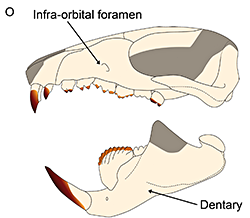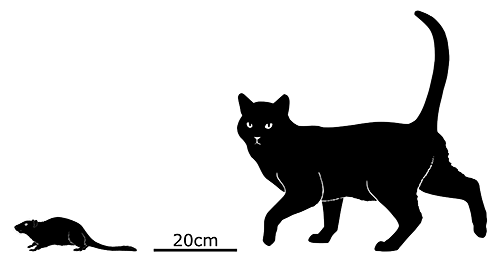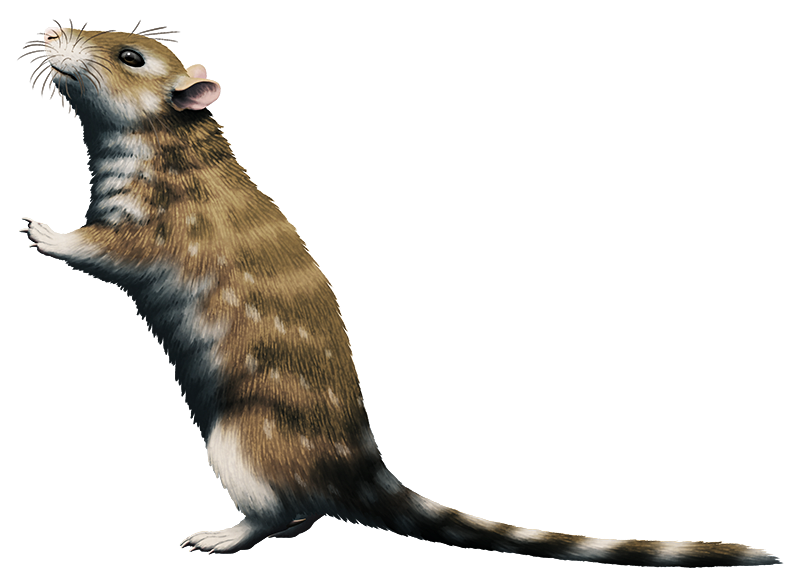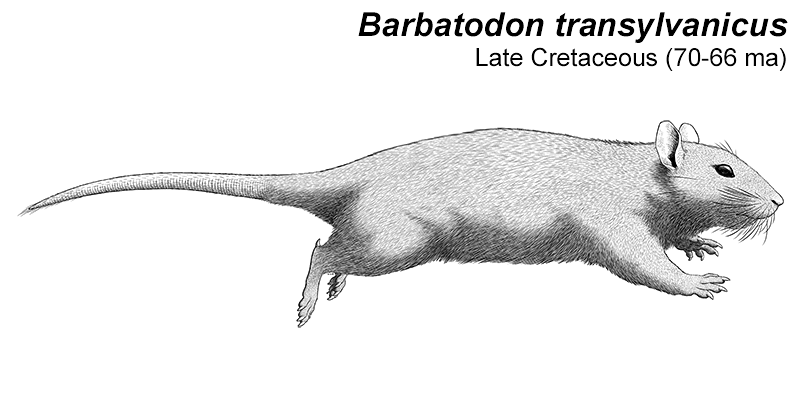The rodent-like multituberculates were a major lineage of mammals that were only distantly related to modern marsupials and placentals. They originated around the time of the mid-Jurassic (~168 million years ago), survived through the end-Cretaceous mass extinction, and went on to become one of the most diverse and successful types of mammal in the Paleocene. After that point they began to decline, and after anw over-130-million-year-long run they went extinct* in the early Oligocene (~33 million years ago).
(* Except, possibly, in South America, where an enigmatic fossil known as Patagonia peregrina may represent a multi surviving as recently as about 18 million years ago in the early Miocene.)
First discovered in North America in the 1880s, Catopsalis foliatus was part of a group of multituberculates called taeniolabidoids. These multis got significantly larger than the rest of their kind – averaging beaver-sized but with some species getting up to at least capybara-sized – and were some of the first mammals to evolve into relatively big herbivores after the extinction of the non-avian dinosaurs.
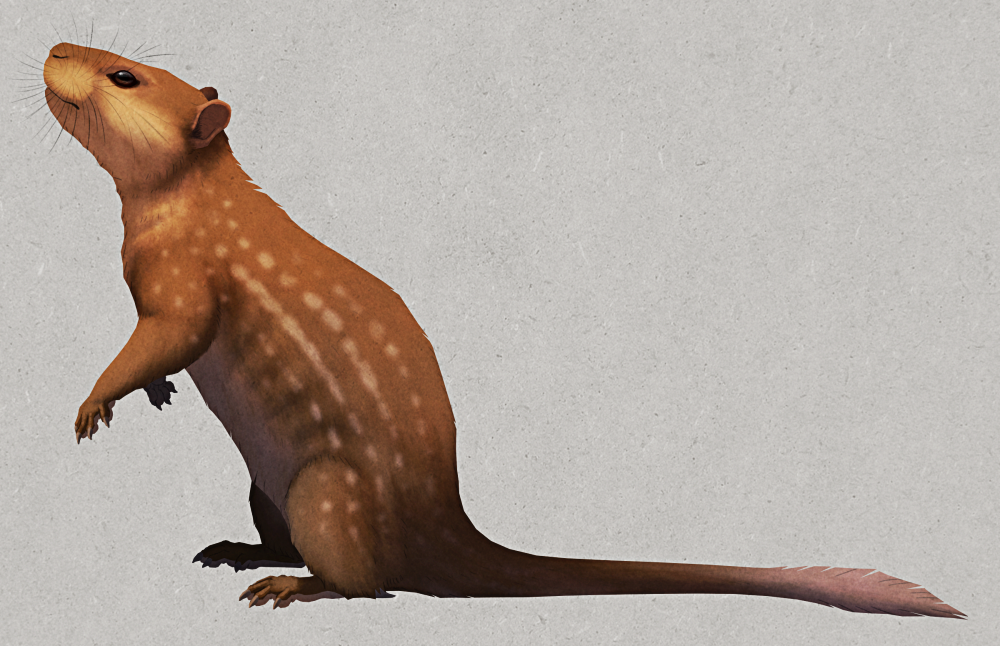
Catopsalis was named based on a partial jawbone and a few teeth, and over the next century or so various other similar-looking fossils from both North America and Asia were added into the genus as additional species. Eventually Catopsalis contained eight different species, ranging over about 10 million years from the late Cretaceous to the early Eocene – not especially big compared to some other wastebaskets we’ve looked at this month, but it was still a problem, muddying up attempts to understand the actual evolutionary relationships and biogeography of the taeniolabidoids.
Cladistic studies in the 1980s showed that Catopsalis was paraphyletic, made up of at least five separate lineages, and a few of them were subsequently renamed and reclassified. The Cretaceous Asian forms became Djadochtatherium and Catopsbaatar, and are now considered to be part of a different lineage of multis known as djadochtatherioids, while one of the remaining North American species then became Valenopsalis.
…But a couple of other new Catopsalis species have also been named in the meantime (one as recently as 2018), so there are still seven different species that need sorting out in this particular wastebasket.


